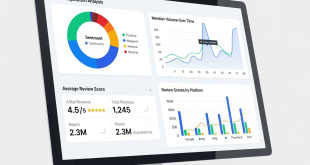 As an entrepreneur, the success of the enterprise rests squarely on your shoulders. After all, you’re the one who’s assumed the risk for the business venture. You’re already used to moving quickly and staying agile – but here’s something to ask yourself:
As an entrepreneur, the success of the enterprise rests squarely on your shoulders. After all, you’re the one who’s assumed the risk for the business venture. You’re already used to moving quickly and staying agile – but here’s something to ask yourself:
Is your website keeping up with you?
Businesses online today need every ounce of speed they can lay their hands on to satisfy the expectations of their customers – who can be located just around the corner…or on the other side of the world. They’re no longer hampered by slow connectivity, so when they encounter a website that’s slow to load, they blame that site’s owner – you.
On the Count of Two
Website performance measurement firm Gomez tells us that the average online viewer expects their browser to render a page in two seconds or less. What happens if this isn’t the case? If that page hasn’t loaded in at least three seconds, up to 40 percent will simply abandon the website. Ouch!
Late to the Party
You already know the consequences of running a slow website: it chases away customers. Did you know it makes it more difficult for potential customers to find you, as well? As an entrepreneur, you’re working as hard as you can to be as big as you can – but your ranking on the holy grail of search engines – Google – diminishes based on the load speed of your website. For more on this, check out this Google blog post.
Let’s say there’s high confidence that you’ve got your website optimized to deliver the data-intensive “heavy pieces” – generally your images, CSS and JavaScript elements – out from your server as quickly as possible. Kudos. You may have won the battle, but you haven’t won the war.
As an entrepreneur you’re used to doing things yourself, but now you’ve got to call in some reinforcements. That’s because you can’t control where your customers are located. The farther your server is away from a customer, the longer it takes for data to get to them. Okay, maybe that only means a couple hundred milliseconds. Big deal.
Yes, very big deal.
Amazon reduced the load time of its webpages by a mere 100 milliseconds. Shaving off that time increased sales by a full percentage point. Their quarterly revenue is tens of billions of dollars. Do the math. If you can save 100 or 200 milliseconds, you just might be pushing your website from good…to great.
A Simple Solution
What you can control, you can improve. So while you can’t do much about where your website viewers are located, you can do quite a bit about the location of the content of your website in relation to the viewer.
Say hello to MaxCDN. CDN is an acronym stands for “content delivery network.” The probability is high that your favorite social network pops up so quickly on your browser because of a CDN. The last software update to your computer was most likely served up to you from a CDN. And, if you’ve bought a song on Apple’s iTunes or purchased something from an e-commerce website – that was probably served up by a CDN, too.
Not long ago, only the big players could afford the services of a CDN. That left out most entrepreneurs and small businesses. Today, it’s an easily affordable investment that puts the power of many servers in many locations creating a large number of short connection points between your content and your customers. You want this.
Here’s How it Works
Relying on the Worldwide Web to quickly and reliably deliver your content from a single server source is highly limiting. Look at it this way:
- Your website is hosted in Chicago, and a potential investor in your company is looking at it on his laptop in Singapore
- The webpage he’s requested has 100 objects on it (an estimate actually on the lower end of an average well-designed webpage)
- His web browser is going to make 100 individual requests to get all those items from Chicago to Singapore.
While it’s true that those requests happen in milliseconds, so it should only take two or three seconds of load time, that’s not going to happen. It would if he was close in proximity to your Chicago server. In this case, Singapore is half way around the world.
That’s where a CDN comes in. The “heavy parts” of your website are deployed on a network of servers around the world, so those big files are delivered from the server that’s closest to your customer. In many cases, it’s just one hop. Remember that potential investor over in Singapore? His experience with your website would likely be just as if he were close by that currently single server you have doing all the work by itself in Chicago.
Plug-In Easy
Being an entrepreneur means you’re probably still at the point where you’re doing as much of what you can by yourself – and if that’s the case, you’ll appreciate how easy it is to singlehandedly implement the services of a CDN such as MaxCDN.
In most cases, you can turbocharge the speed of your website using one of the MaxCDN plugins – in as little as five minutes. That’s all it’ll take if you’re using any of the most popular CMS systems out there, such as WordPress or Joomla.
MaxCDN has a suite of plugins for some of the most popular website software in use around the world today:
• E-commerce: Magento, X-cart, Prestashop, Opencart
• CMS: WordPress, Joomla, Drupal
• Forums: Vbulletin, IP.Board, Social Engine, Gossamer
Fear not if you’ve forgone any of the standard CMS solutions and created something unique. Even integrating CDN functionality into your website manually is something you can do yourself with the help of a very easy-to-follow guide offered by MaxCDN.
Whether you go with a plugin or a custom installation – if the support guides aren’t answering a question – there’s 24/7 support accessible either by phone or with a scheduled call.
Over 13,000 Customers Can’t be Wrong
MaxCDN‘s global distribution of 500 peering partners push your website’s direct reach into over 90 countries. This is the primary reason why the MaxCDN roster of customers is comprised of so many entrepreneurs. More than 13,000 customers have discovered that using MaxCDN allows them to reach customers with just a single network hop. In some cases that means your page load time could decrease from hundreds of milliseconds to only tens.
As Close as Your Browser or Your Phone
Once your CDN is set up, gauging the jump in performance is as easy as a mouse click with the MaxCDN browser-based control panel. If you’re running the show all by yourself, you’ll appreciate this because it gives you complete control to measure speed, data usage, and detection of problems.
You can get the latest complete network status, and there’s an impressive amount of help-yourself assistance on the MaxCDN website, ranging from FAQ sections for the plugins, to forums and wiki articles.
Because MaxCDN can pull content from your existing website automatically, there’s not much you have to do to get started using the service. In most cases, you simply need to get your image, CSS, and JavaScript links changed so they point to MaxCDN. This doesn’t take hours – you can do this by yourself in a matter of minutes.
And, if you’re an entrepreneur on a budget (sound familiar?) this is not going to bust your microbudget. Plans and pricing are highly affordable – especially if you take advantage of this.
The MaxCDN solution speeds up your website, gets you increased conversion and higher Google rankings – but perhaps best of all, it’s a painless integration for you and a welcome improvement for your customers.
 Entrepreneur Resources Your source for small business information
Entrepreneur Resources Your source for small business information




